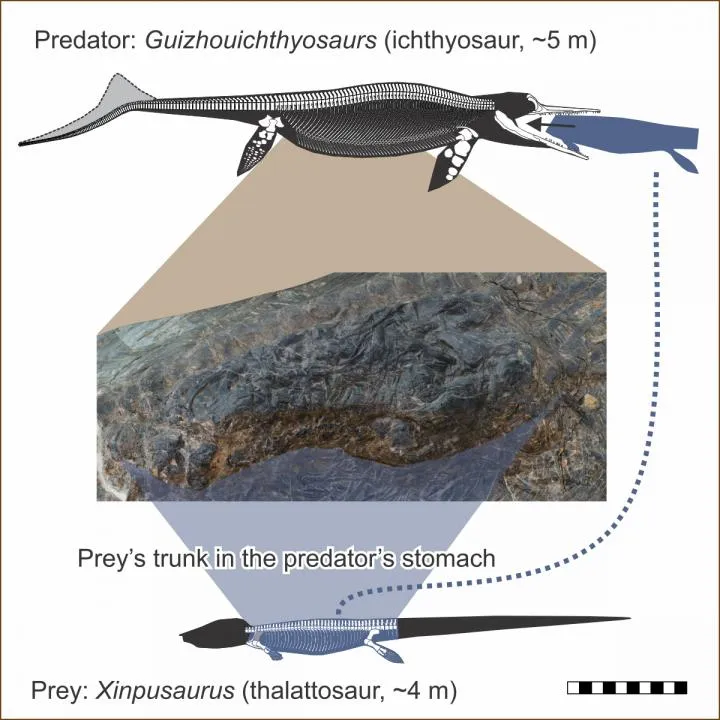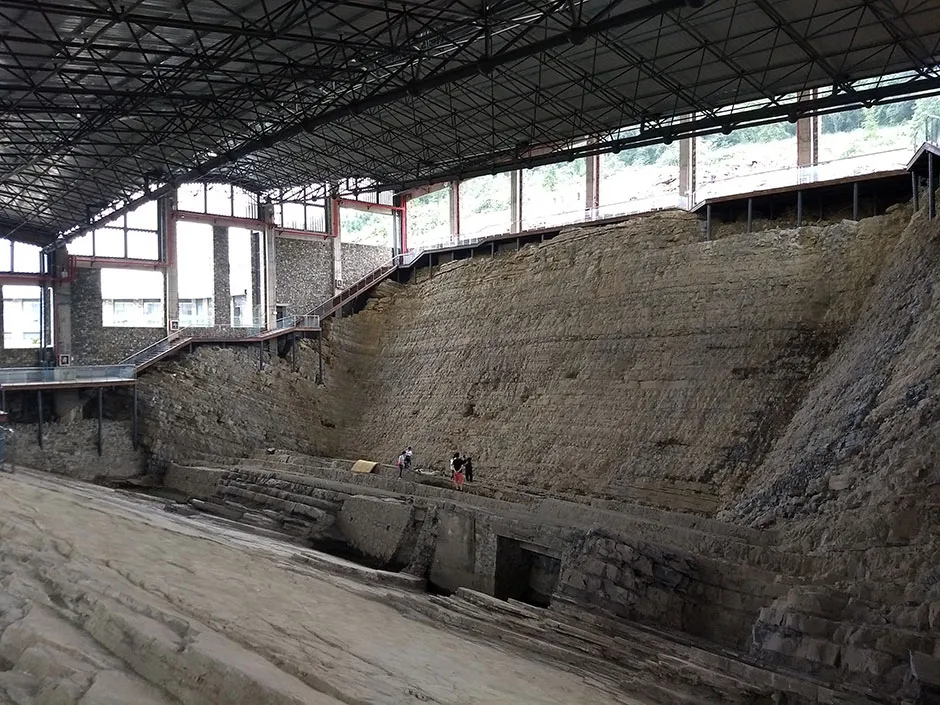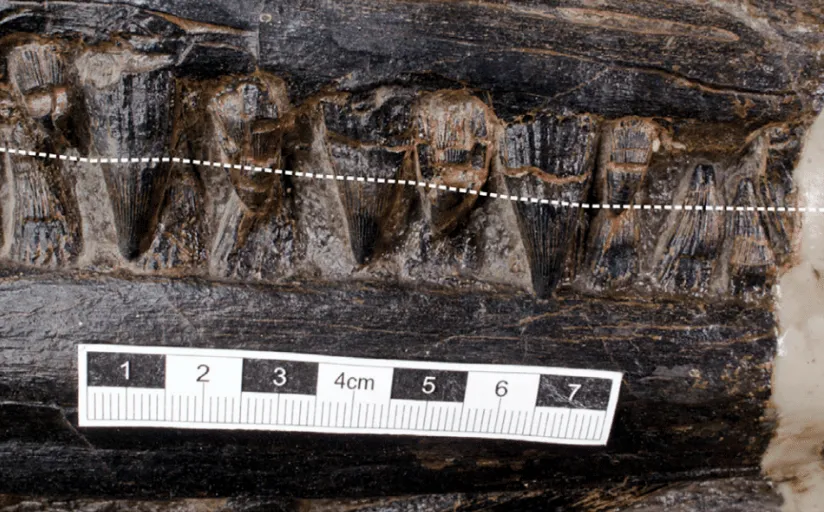A 240 million-year-old fossil has revealed that dolphin-like ichthyosaurs could gobble up animals almost as big as themselves. It’s the first direct evidence of ‘megapredation’ – one large animal eating another – in the ancient world.
Ichthyosaurs were marine reptiles that lived during the time of the dinosaurs. The fossilised ichthyosaur in this new study was uncovered in a quarry in southwestern China. It’s an almost complete skeleton, around five metres long, with the bones of another marine reptile called a thalattosaur preserved inside its stomach.
Read more about ichthyosaurs:
- Ichthyosaur's pebble-like teeth used to 'crush the shells of their prey'
- Ichthyosaur extinction down to climate change and slow evolution
The thalattosaur was around four metres long and more lizard-like than the ichthyosaur, with four paddling limbs. The bones found in the ichthyosaur’s belly correspond to the thalattosaur’s middle section, from its front to back limbs.
“Our ichthyosaur’s stomach contents weren’t etched by stomach acid, so it must have died quite soon after ingesting this food item,” said study co-author Dr Ryosuke Motani, a paleobiologist at the University of California, Davis.

The researchers don’t know for sure whether the ichthyosaur killed the animal itself, or whether it was scavenging following another animal’s kill.
But several pieces of evidence suggest that it was a direct kill, including the fact that the nutritious torso and legs were still intact – this probably wouldn’t have been the case if another predator had got there first.

The ichthyosaur had relatively small, peg-like teeth, which suggest that, rather than neatly slicing through its victim, it would have gripped it before ripping or tearing it apart. Present-day apex predators such as orcas, leopard seals and crocodiles use a similar technique.

“Now, we can say for sure that [ichthyosaurs] did eat large animals,” said Motani. “This also suggests that megapredation was probably more common than we previously thought.”
Reader Q&A: Why were dinosaurs so big?
Asked by: David Paylor, Oxford
Dinosaurs lived during the Triassic, Jurassic and Cretaceous. During these periods, the climate was much warmer, with CO₂ levels over four times higher than today. This produced abundant plant life, and herbivorous dinosaurs may have evolved large bodies partly because there was enough food to support them. But being large also helps to protect against predators.
The giant sauropods had to eat plants as fast as they could, to grow big enough to be safe from carnivores like T. rex and Spinosaurus. Meanwhile, the carnivores were becoming larger just so they could tackle their enormous prey. Another possibility is that the herbivorous dinosaurs were ectothermic (cold blooded), and being huge helped them regulate their temperature. This theory is problematic though because evidence increasingly suggests that the large carnivores were endothermic (warm blooded), which means that dinosaurs would have evolved two different metabolic systems, side by side.
Read more:
